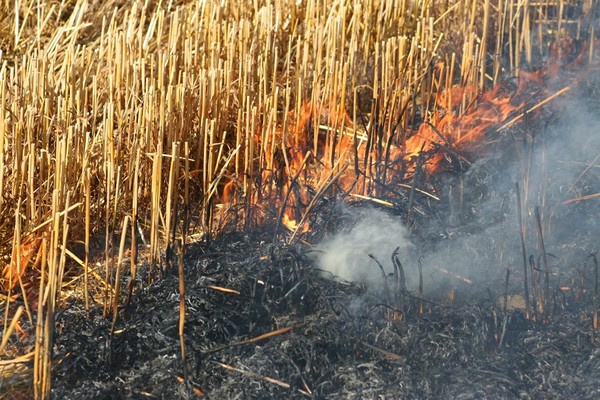I recently received an email from a farmer who forwarded a Tweet providing a link to a report in New Zealand. The heading on the linked website was “Science Backs Use of Stubble Burning”. My immediate thought was “was it ever thus?” Crop science has always backed straw burning. I was closely involved with MAFF’s machinations on the straw burning issue in the late 1980’s. The crop science clearly backed straw burning but the practice was banned despite that knowledge.
Perhaps a couple of issues have changed since the 1980’s. Only a few years after the ban was imposed, many farmers commented that their soil had become easier to work where they incorporated the straw. I think this was the result of regular incorporation of straw increasing soil fungal biomass; to a certain extent this acts as a proxy for organic matter.
The big change since the 1980s relating to issues around straw burning is herbicide resistance in black-grass. This has increased the reliance on cultural measures. The ban on straw burning removed one cultural option. Straw and stubble burning can reduce the number of viable seed by up to 50%. That sounds impressive but this loss of viable seed would only reduce the annual chemical control required in continuous winter wheat, established by non-plough tillage to 20 cm depth, from 97% to 94%.
In addition to killing viable seed, straw burning reduces the dormancy in surviving seeds. This may provide potentially the most significant impact on black-grass control particularly where a ‘hot’ burn is not possible. However, this latter statement comes with a huge proviso. To benefit fully from reduced dormancy, drilling will have to be delayed. Going by the record of this year, you have to ask the question whether farmers are willing or able to delay drilling for a sufficient time in order to exploit fully the benefit of straw burning.
This year, even without straw burning, we have had the potential advantage of low dormancy. Despite this, many farmers drilled fields with known high levels of black-grass in mid-September. The subsequent dry conditions in many areas resulted in poor herbicide control and some of these fields have now been sprayed with glyphosate prior to re-drilling.
This suggests that there is no simple silver bullet for black-grass control. So whilst straw burning would be beneficial, particularly where drilling is delayed, the real answer is hard to swallow. Black-grass populations have to be reduced to low levels by adopting far-reaching cultural control measures, perhaps the most important of which, in this context, is spring cropping. With lower background levels of black-grass, the penalties of poor herbicide control in some seasons will be minimised. Once background levels of black-grass have been reduced to manageable numbers, there are less daunting cultural measures that may enable continuous autumn cropping, provided that it is not all early drilled. The issue of defining a more durable approach will depend on soil type, the farmer’s attitude to cultivation practice and crop choice and, as well, their attitude to risk.
Going back to the New Zealand report, I think it is important to look at it in context. It is in fact a report commissioned by Environment Canterbury and it is focussed on the farming systems of the Canterbury Plain in South Island. This area produces a lot of specialist seed crops that are sown after straw crops and are of huge value to the local economy. Herbicide options are limited in these seed crops and straw residues can affect their establishment. Hence, straw burning significantly increases the chance of optimising crop establishment and achieving the high levels of weed control necessary in order to remove weed competition and minimise harvested seed contamination. One obstacle that does not apply on the Canterbury Plain is that soil organic matter levels are high, and therefore the potential benefit to soil structure from incorporating straw is minimal.
Over the last few months I have become very familiar with the issues relating to straw burning on the Canterbury Plain. I was one of the authors of the report and had many hours of stimulating discussion with my fellow authors. Not that I visited New Zealand to do this; I was at home and sat round the table via Skype…

